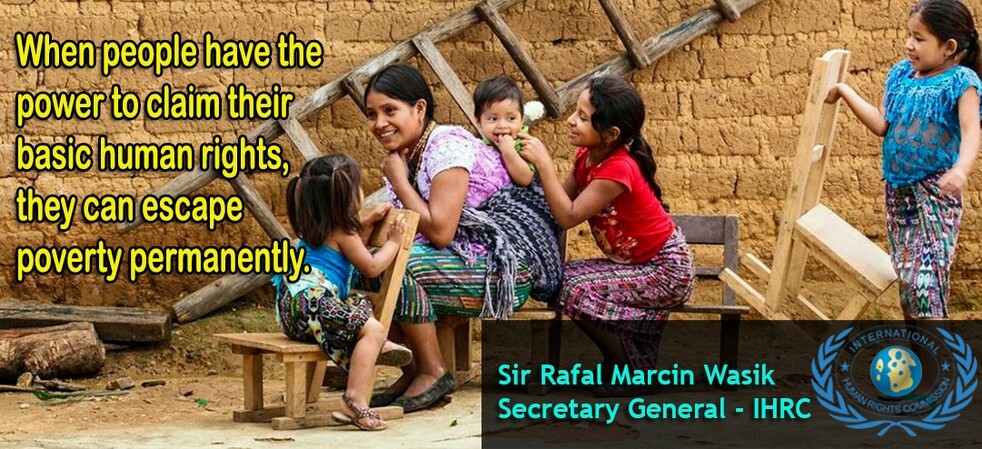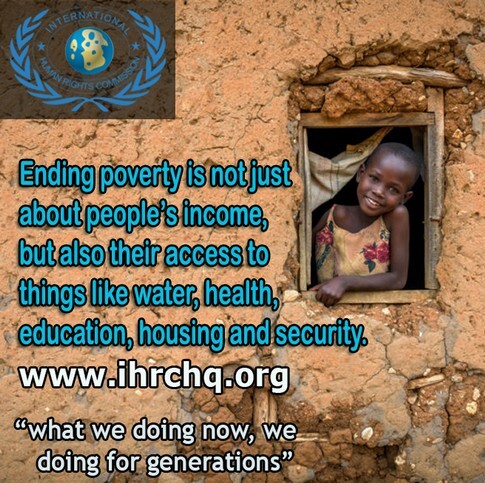Basic Human Rights
Press center > Articles

The majority of the 1.2 billion around the world who live in absolute poverty are Women and Girls
– Sir Rafal Marcin Wasik
When people are excluded within a society, when they are not well educated and when they have a higher incidence of illness, there are negative consequences for society. We all pay the price for poverty. The increased cost on the health system, the justice system and other systems that provide supports to those living in poverty has an impact on our economy.
There is no one cause of poverty, and the results of it are different in every case. Poverty varies considerably depending on the situation. Feeling poor in Canada is different from living in poverty in Russia or Zimbabwe.
Poverty can rob children of their basic rights. There’s significant evidence to show that poverty can have devastating short and long-term effects on a child’s ability to learn, build relationships and make a positive transition to adult life. Poverty can often feel overwhelming. When we hear that nearly 400 million children still live in extreme poverty we can wonder what difference we can really make.
The majority of the 1.2 billion around the world who live in absolute poverty are women and girls. They are denied basic human rights. They have limited access to health care, to an education, to the opportunity to earn a living. They are denied a say in the decisions that affect their future.


When women are healthier, their children and families are healthier. When girls get an education, they build better lives for themselves and their families. And when women have an income, they invest in their children and families, creating benefits for this generation and the next. When one woman is helped out of poverty, she brings many other people with her.
Data suggest that the rapid gains against extreme poverty have not been matched by reductions in the number of people living at these higher levels of income. In 2015, over a quarter of the world’s population survived on $3.20 per day and nearly half of the world still lived on less than $5.50 per day.
Between 1990 and 2015, more than a billion people moved out of extreme poverty, and the global poverty rate is now lower than it has ever been in recorded history. In 1990, almost 36 percent of the global population lived on less than $1.90 a day, but by 2015 this number had dropped to a new low of 10 percent.
Preliminary forecasts for 2018 show that global extreme poverty has further declined to 8.6 percent, besting the 9 percent interim target set for 2020 by two years.
While data are limited, there is evidence that women and children are disproportionately affected by poverty in many but not all countries. However, more surveys are needed to capture consumption patterns of individuals so that governments can implement policies, particularly related to women’s labor force participation and early childhood development, to bridge the inequalities within households.
When people have the power to claim their basic human rights, they can escape poverty permanently. Human development is driven by empowered women. But women and girls are still massively under represented and often oppressed.
Issued:
 H.E. Mohsin Durrani
H.E. Mohsin DurraniAmbassador at Large
Advisor Affairs UN IHRC


